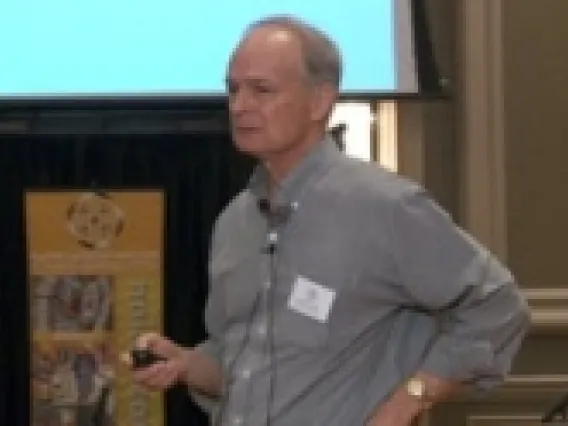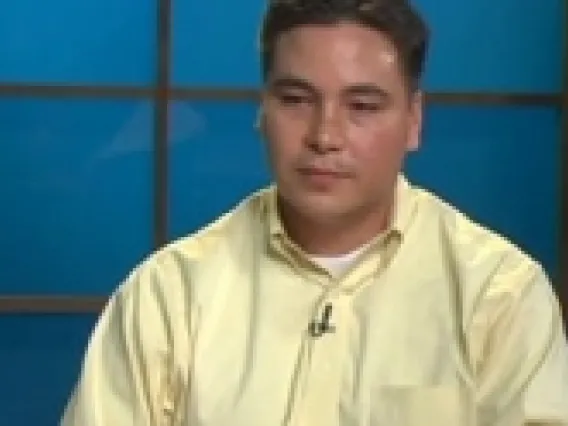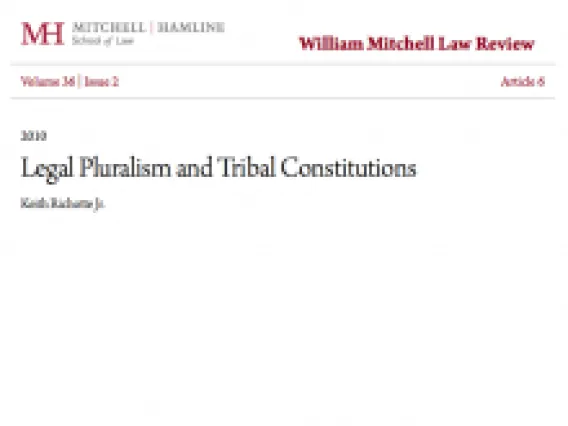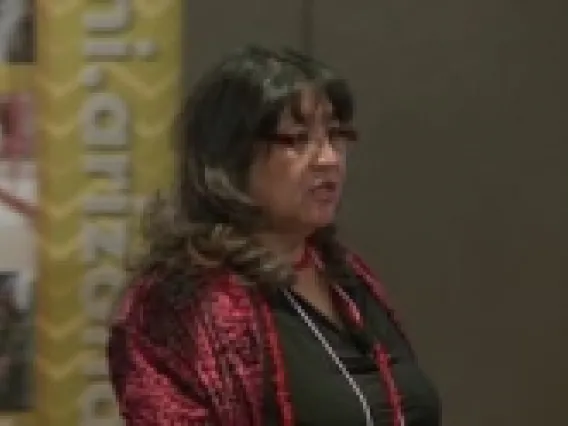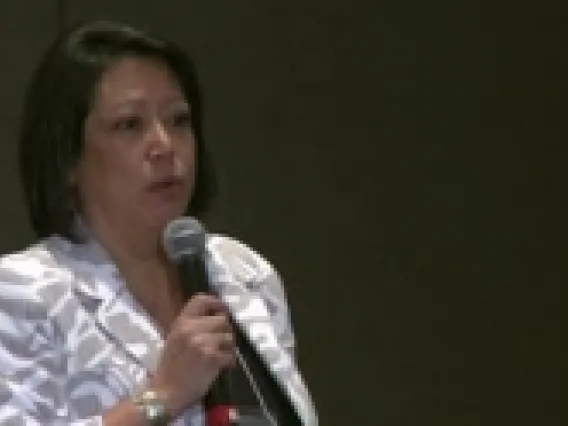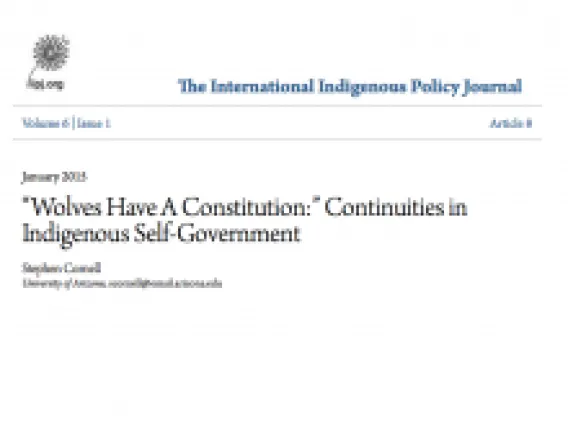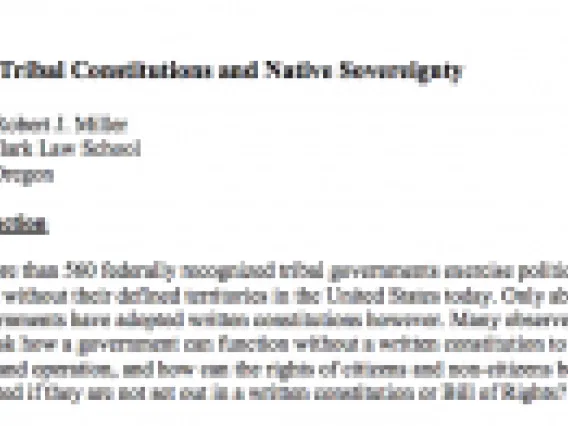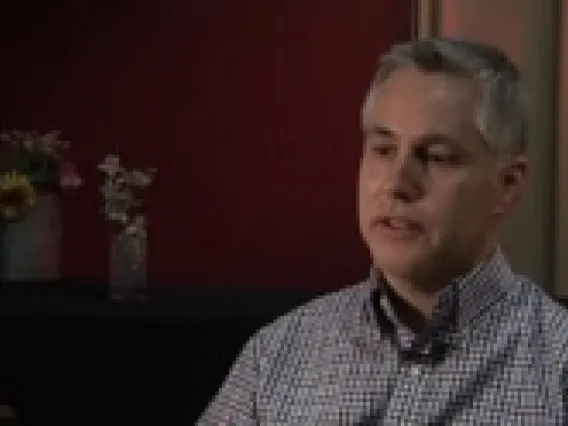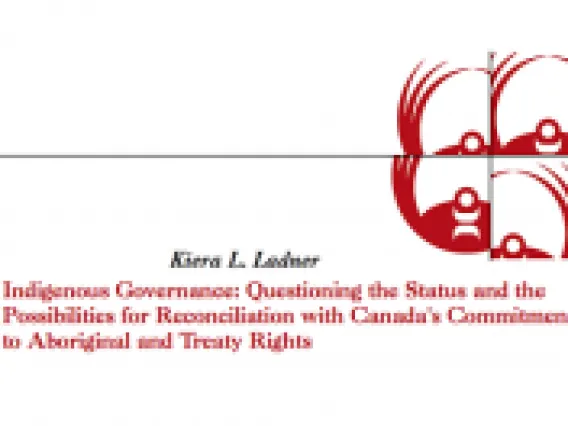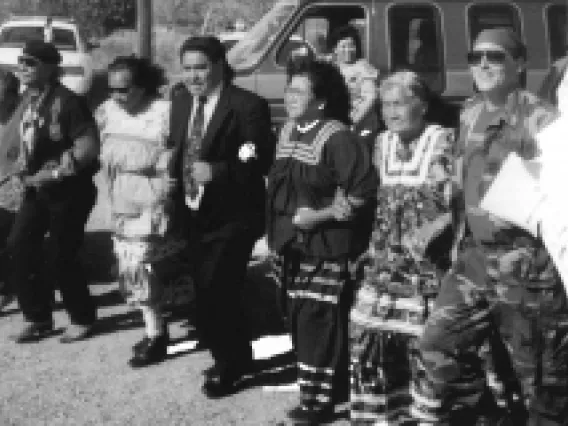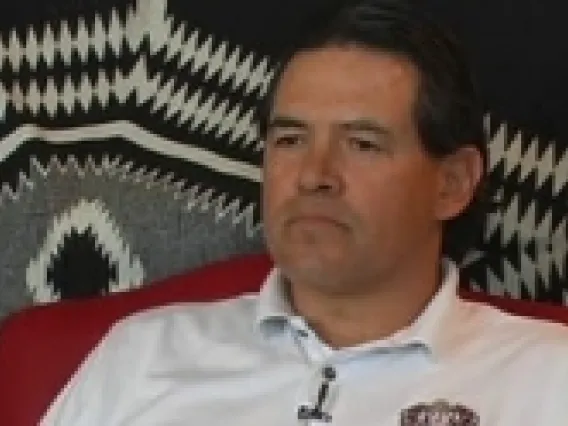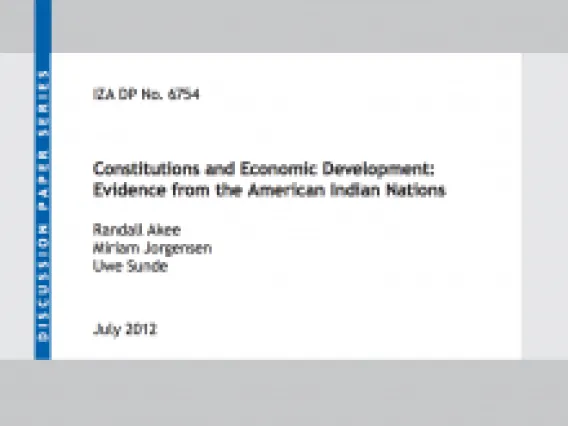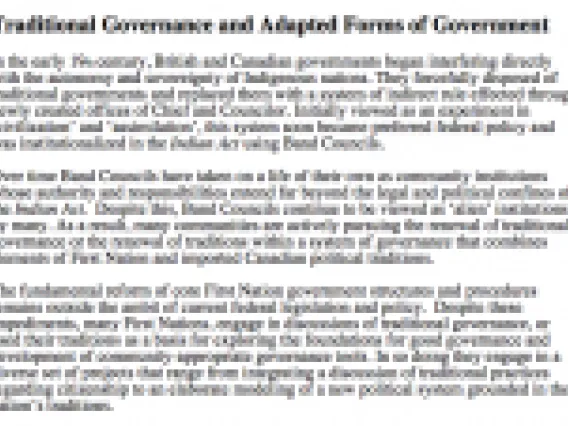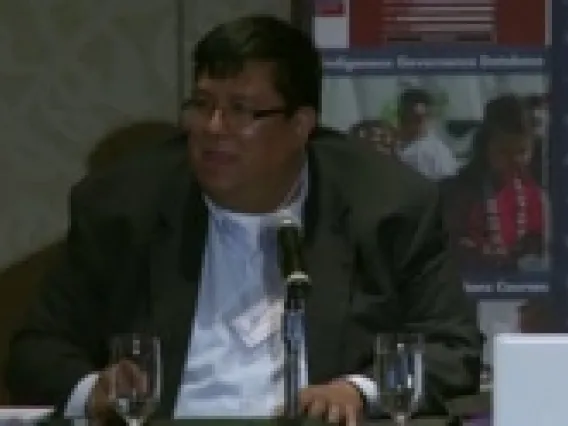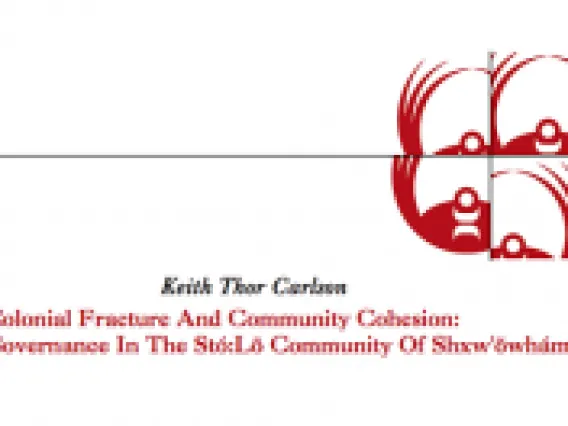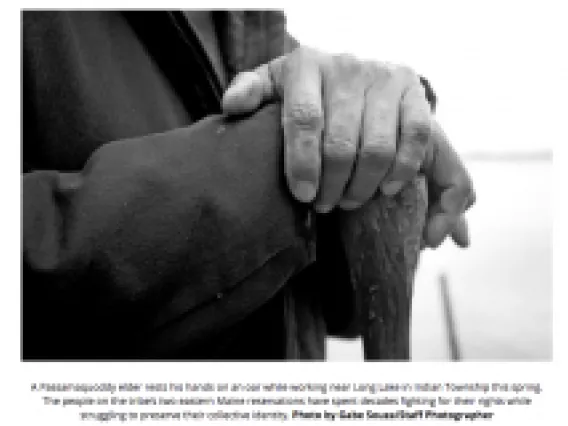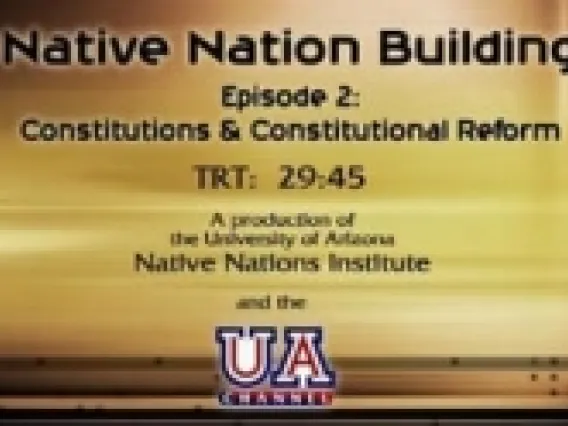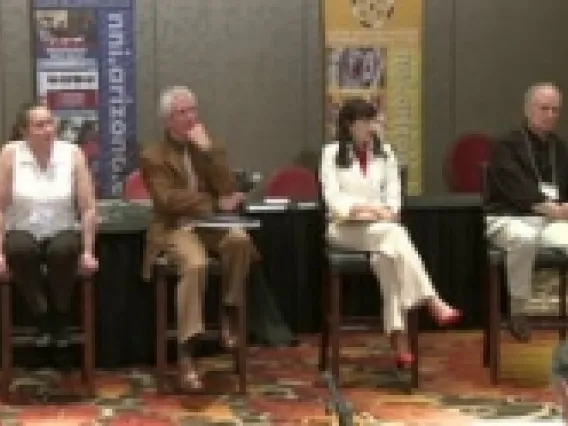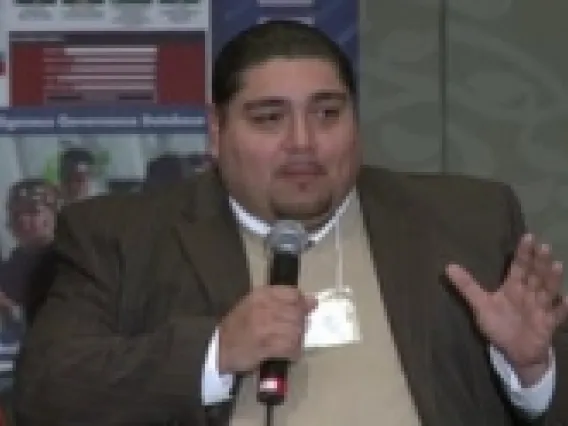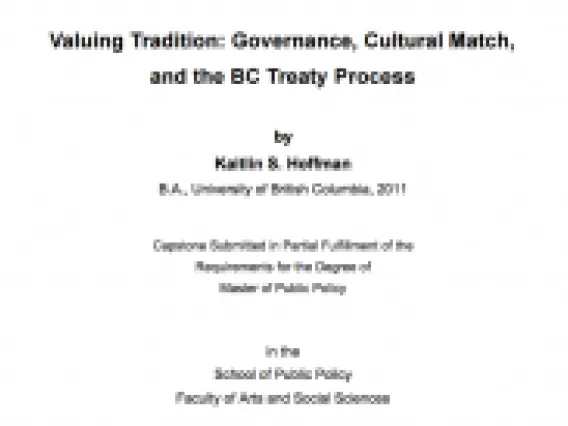DEFINING
WHAT IS A CONSTITUTION?
The meaning, roles & history of Indigenous
constitutional governance
.
1 | WHAT IS A CONSTITUTION?
Written or unwritten, a constitution is the set of values, principles, and rules that a community or nation uses to govern itself. Most constitutions address such topics as: Who are we as a people? Where are we from? What do we value? How do we make decisions? Who has authority over what? What kinds of relationships do we expect to have with each other, with outsiders, and with the world around us? How do we choose our leaders? How do we deal with disagreements or disputes among us? How do we organize to get things done?
Discussing the fundamental rules–in effect, the constitution–that a nation uses to govern itself, Judge Joseph Thomas Flies-Away of the Hualapai people says,
“A nation’s laws are the deepest expression of its culture. They say who we are, what our values are, how things ought to be done in our society, what we want for our community and our children and our grandchildren.”
Citation: Judge Joseph Thomas Flies-Away, presentation on constitutional self-government to an executive session of the Initiative on American Indian Constitutional Reform, sponsored by the Harvard Project on American Indian Economic Development, Mashantucket Pequot Tribal Nation, October 17, 2002
Constitutions matter because they tell citizens of the nation how things should be done. They matter because they are a tool for governance, a window on the nation’s beliefs and core values, a way to inform citizens of their own obligations, and a way to tell them what to expect of their leaders.
Without a constitution—without a set of shared understandings or rules—community action becomes haphazard. No one is certain who has the authority to make decisions or how the community should implement its decisions. Disputes don’t get resolved because the rules for resolving them aren’t clear. Those who interact with the nation don’t know what to expect.
But if the rules are clear, then everyone—from citizens to outsiders—knows how the nation’s governing system works. They know what to expect. They know what the nation values and how it is likely to act.
Questions to Consider:
- Whether written or oral, what are the fundamental rules of our nation?
- Are those rules clear? Do the majority of our citizens understand our current system of government and abide by the rules?
- Do those rules seem to work? Is our nation able to get things done?
- Are we content with our current governing system?
Related Resources:
Constitutions don’t have to be written documents. Native nations in North America governed themselves successfully for generations without written constitutions. Their constitutions were oral, embedded in their cultures and in the teachings of the natural and spirit worlds. These rules and laws were learned from parents, grandparents, and others.
The trend today is for Native nations to have written constitutions to describe their governing structures and processes. In part this is because Native nations can no longer assume that all their citizens have learned and share the same knowledge about the nation’s rules. Writing a constitution down also makes it easier for non-Native individuals, organizations, and governments to understand what a Native nation government does, how it does those things, and why.
Nevertheless, some countries, communities, and Indigenous nations still have unwritten constitutions. The authority of a constitution doesn’t come from it being written down. It comes first from the shared belief among the people that the constitution, written or not, expresses their ideas about how they should govern. It comes second from the commitment of leaders and citizens to uphold and enforce the constitution, making sure it actually determines how things are done.
Questions to Consider:
- Do we currently have a written constitution?
- If not, would it be helpful to our citizens and outsiders for us to put down on paper how our government is structured and how it operates? Or would that violate something of importance to us?
- If we already have a written constitution, is it clear and easy to understand? Are our citizens aware of the constitution and its importance?
- If we prefer to have an unwritten constitution, how do we make sure that our citizens and others understand and respect it?
Related Resources:
2 | IS A CONSTITUTION JUST A WESTERN IDEA?
No. Most human communities that persist over time rely on broadly understood rules that tell community members how to behave, who can do what, how to relate to the natural world, and so forth. Such rules may be better known to people as, “how we decide things and how we do things,” or “how we take care of ourselves, our family, the land, and the animals,” or “how we’re expected to behave as a member of this community,” but they are constitutions nevertheless.
Some have argued that constitutions can be found even in the non-human world. For example:
“Wolves have a constitution. The wolf pack has rules. Each wolf knows its role and respects the rules. That makes the pack effective. When they follow the rules, the system works.”
Citation: Ngarrindjeri elder, in conversation with NNI staff, Australia, 2011.
Indigenous peoples always have governed themselves. As with all human societies, some did a better job of governing than others. But most Native nations had governing systems that supported their core cultural values, strengthened social relationships, resolved disputes, advanced their priorities, and responded to the circumstances they faced.
Many of these systems included clear separations of powers and allocations of responsibilities. They entrusted certain people or specialized groups with decision-making authority over various domains of social life. Examples include medicine people, war chiefs and peace chiefs, specialized societies, men’s groups or women’s groups, spiritual leaders, town marshals or town criers, elders, and so forth.
These systems were not necessarily static. Indigenous peoples adjusted their governing systems over time to ensure their survival as circumstances changed, to achieve their goals when new opportunities appeared, and as they learned from experience.
In effect, these nations had constitutions: unwritten but binding rules and procedures, many of them given by ancestors or spirit beings or shaped by hard experience. The rules and procedures answered questions such as: Who should have authority over what? How will we make decisions? What should we do when we have disagreements? What behavior do we expect from each other? How should we interact with other beings on this earth–other peoples, the animals, the waters, the land itself?
While unwritten, these pre-colonization constitutions typically had real power. Individuals growing up in the community learned what the values, principles, and rules of the community were. They learned their responsibilities. If someone broke the rules or undermined the community’s core values, that person might be publicly criticized, punished, or even banished.
Raymond Austin, longtime Justice in the Navajo Nation Court, discusses the “values, norms, customs, and traditions” that traditional Navajos understand and that “are transmitted orally across generations and which produce and maintain right relations, right relationships, and desirable outcomes in Navajo society.” He cites a Navajo Nation Court decision saying that “Navajos believe in a higher law…, a concept similar to the idea of unwritten constitutional law.”
Citation: Raymond D. Austin, Navajo Courts and Navajo Common Law: A Tradition of Tribal Self-Governance. (Minneapolis: University of Minnesota Press, 2009), 40; original source: Bennett v. Navajo Board of Election Supervisors, 6 Nav. Rptr. 319, 324 (Nav. Sup. Ct. 1990).
Questions to Consider:
- How did we govern ourselves prior to European contact?
- How was our nation organized? By clan? By kinship?
- How were roles and responsibilities distributed?
- How did we make decisions?
- How were laws made and enforced?
- How did our citizens learn how our system worked?
Related Resources:
The European invasion of North America placed tremendous stress on Indigenous governing systems. Eventually, the steamroller of conflict, colonialism, dispersion, and assimilation meant that most Native nations lost control over their governments. Increasingly, outsiders replaced traditional governments and made the major decisions affecting Native peoples, turning their nations into externally administered communities. Most Indigenous constitutions lost much of their power or were forced to operate in the shadows, out of sight of colonial administrators.
When the United States and Canada decided to allow Native peoples a modest bit of self-government, they either strongly encouraged or forced those peoples to adopt governing structures that reflected European governance practices. This happened with the Indian Reorganization Act of 1934 in the United States and with the Indian Act of 1876 in Canada. In short, older Indigenous constitutions were replaced by non-Indigenous ones. Today, while some Native nations retain older governance practices, using them when they can and in ways that may not be readily visible to outsiders, many Native nations operate under such replacement constitutions or, especially outside North America, according to the imposed regulations of external administrators.
Questions to Consider:
- How different is our current governing system from the ways we governed prior to colonization?
- Have we retained some of our older ways of doing things? Which ones?
- To what extent does our current governing system meet the challenges we face today?
Related Resources:
3 | HOW DOES OUR NATIVE NATION CURRENTLY GOVERN?
The governments of Native nations, like those of other nations, take many forms.
Some Native governments are truly constitutional: government is itself governed by widely understood rules that have broad support in the community. Some Native governments, including some with written constitutions, are in fact autocratic: individuals in positions of power decide for themselves which rules to follow and which to ignore. They may even decide what the rules will be and then use those rules to benefit themselves instead of the nation as a whole.
Some Native governments may be constitutional, but people aren’t sure it’s the right constitution for them. This often is the case when the rules have been imposed by someone else. “We govern that way, but we’re not happy with the current system. It isn’t the right system for us.” And some Native nations struggle to govern at all, caught in an imposed, colonial system and searching for openings where they can pursue their own goals and assert their own values.
Which, if any, of these situations describes our nation’s current governing system?
The written constitutions of many Indigenous nations are no longer Indigenous products. They’re someone else’s idea of how Indigenous nations should govern themselves.
North America offers classic examples. The United States encouraged many Native nations to adopt written constitutions in the 1930s after passage of the Indian Reorganization Act. Most of these constitutions follow simple models provided to American Indian nations by the U.S. government. In Canada, many First Nations operate with governing systems prescribed by the Indian Act of 1876 and its subsequent amendments. In both countries, the constitutions provided by outside governments are designed more for running social programs and deciding municipal matters than for the government of nations.
Some nations in both countries have broken away from these systems, modifying their constitutions or replacing them with Indigenous versions that reflect Indigenous aspirations, values, and preferred ways of exercising authority. Some nations have reintroduced their own governing traditions, adapted to take into account the changed circumstances these nations face.
Where does our current constitution come from? Is it our constitution, or is it someone else’s idea of how we should govern?
Questions to Consider:
- Where does our current constitution come from?
- Does our current constitution represent our ideas of how best to govern, or someone else’s ideas?
- To what extent does our current constitution (or our governing documents) express our values as a people?
Related Resources:
Most Native nations involved in constitution-making or constitutional reform are creating written documents. But even in those cases, some of the principles, values, and procedures that a nation uses to govern itself may not be written down. Many nations depend as well on their own shared culture, a set of unwritten understandings about the appropriate behavior of leaders and citizens and about how things are to be done.
Thus a nation may have a formal, written Constitution (a Constitution with a large 'C') but also rely on an unwritten code of behavior and responsibility (a constitution with a small 'c') that its citizens expect each other to know and observe. In other words, a written constitution (even one newly created by a tribe to fit its culture, vision, and governance needs) might not include all the things that go into effective governance.
Questions to Consider:
- If our nation has a written constitution, what unwritten rules exist outside of the constitution?
- Are there traditional rules that our nation decided not to write down?
4 | WHAT'S HAPPENING TO NATIVE NATIONS CONSTITUTIONS TODAY?
Across the United States and Canada and in some other parts of the world, growing numbers of Native nations are moving to assert their own self-governing power. They are reclaiming the right to make decisions for themselves on their lands and in their communities.
This movement to reclaim self-governing power often involves either reforming existing constitutions or creating written constitutions for the first time. One result is increased innovation and diversity in Indigenous governing structures.
As they reclaim self-governing power, many Native nations are discovering that the constitutions and governing systems created under colonialism are inadequate tools for achieving their goals or meeting their challenges. Many of those systems do not reflect Native nations’ own cultures or values. Those systems were not designed to support the exercise of jurisdictional rights and power. They were not designed to govern. At best, they were designed to facilitate self-management or self-administration.
In response, many of these nations are rethinking their governing systems and modifying or discarding one-size-fits-all constitutions that were developed by outsiders. Some are amending existing constitutions to strengthen them. Others are developing wholly new constitutions that reflect their own ideas about how authority should be organized and how the nation should act.
Questions to Consider:
- What parts of our written constitution work effectively?
- Has our nation ever attempted to reform our written constitution? If so, when and what was the outcome? If not, why not?
- What lessons can we take from other Native nations that have engaged in constitutional change efforts? How are these efforts applicable to our own nation?
Related Resources:
Across North America, Native nations are constructing governing systems that are rooted in their own values, that people see as their own, and that can respond to the challenges of governing in contemporary times. These new or revised constitutions sometimes borrow from past traditions or from other nations, including non-Indigenous ones. Many of them are reinvigorating traditional values and governance principles. Some introduce new ways of doing things designed to address new problems or opportunities.
There’s no one model that fits everyone. Because the situations, histories, and cultures of Native nations are not the same, these emerging constitutions vary. Each nation has to find a way of governing that resonates with its own people and can deal effectively with its own situation. One result is innovation and diversity. Another is learning and borrowing from each other as nations share their stories and ideas.
Questions to Consider:
- What are the particular challenges that we face as a nation as we look to the future?
- What relationships, values, or priorities do we want to protect as we govern ourselves?
- How can we use our constitution to address the things that matter most to us?
Related Resources:
“Wolves have a constitution. The wolf pack has rules. Each wolf knows its role and respects the rules. That makes the pack effective. When they follow the rules, the system works.”
–Ngarrindjeri elder, in conversation with NNI staff, Australia, 2011.

